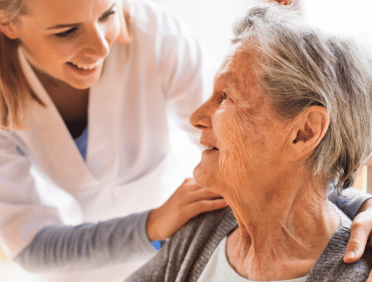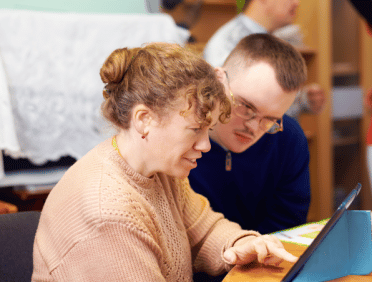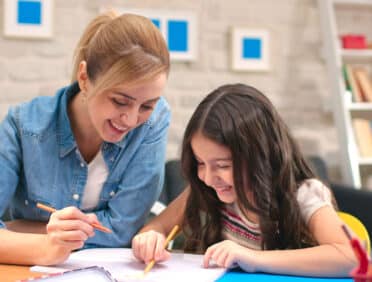What does the term “safeguarding” encompass in the context of children in the UK?
Here in the UK, a child is defined as anyone under the age of 18. Safeguarding is the processes, policies and procedures that protect children from harm. This includes abuse and neglect. Ensuring that they have the best chance to have a happy and healthy life.
Who is responsible for ensuring the safeguarding of children in the UK?
The Department of Education is responsible for setting out the policy and legislation that relates to keeping children safe in England. Whilst they set out the overarching guidance, it is down to those who work with children to ensure that they are protected and safeguarded. That said, in the UK, everyone, no matter what contact they have with children, should be aware of the importance and how to recognise when safeguarding that child may be required.
What are the different types of abuse considered in the context of safeguarding children?
There are a variety of types of abuse that can require the child to be safeguarded. This includes:
- Physical abuse
- Sexual abuse
- Emotional abuse
- Neglect
They can occur as standalone abuse, or they can be combined and be carried out on one child, by the same abuser.
How can one recognise signs of abuse or neglect in children?
The signs that a child is currently facing abuse, or who has been a victim of abuse can vary depending on the child. However, there are some common signs that are often reported to be seen in children who have been abused or neglected.
These include:
- Changes in behaviour or to their personality
- Acting withdrawn
- Showing signs of being anxious
- Becoming aggressive, which is out of character for them
- Lacking social skills and not wanting to make friends
- Poor relationships with their caregivers
- Inappropriate behaviours, language use or knowledge
- Going missing
- Covering their body or not being happy to undress in front of others
- Physical signs, such as bruises, curs other marks and burns
What steps should be taken if there is a suspicion of a child being abused or neglected?
If you believe that a child is at risk of, or is currently being abused or neglected then you need to ensure that you follow the relevant safeguarding policies and procedures that apply to you. If you work with the child, this may be a line manager, or, if you have one, a designed safeguarding lead within your setting.
If a member of the public suspects that a child is being abused, then they should contact their local authority, usually through social services, to ask for support in helping the child.
What laws and regulations exist to protect children from abuse in the UK?
The two main acts that are there to protect children from abuse in the UK are The Children Act 1989 and The Children Act 2004. Both of these acts outline the steps that should be taken to protect children, as well as highlight the processes that are there to keep children safe from harm.
These Acts also highlight who is responsible for the safety and well-being of children and who needs to ensure that this happens.
What role do local authorities play in safeguarding children, and how do they collaborate with other agencies?
The Local Authority is responsible for ensuring that children are safeguarded and that they are protected. In order to do this, they not only need to be aware of their own responsibilities but also the responsibilities of those around the child.
In order to do this, they need to cooperate with a variety of agencies and people. This includes schools, hospitals, GPs and of course, parents themselves too.
How does the process of safeguarding children differ from that of safeguarding vulnerable adults?
Whilst there are some similarities between both safeguarding processes, it is important to recognise that adults have the right to self-determination. Adults can and often do, decide to act in a way that does not protect themselves in any way, which means that safeguarding may not work in quite the same way as with children, who do not have this right, and have actions taken that will be in their best interests.
What support services are available for children who have experienced abuse or neglect?
There are a variety of services, organisations and support networks that are out there to help children who have been a victim of abuse or neglect in their lives. Some examples of this are Childline, NSPCC and Refuge.
Children might also get support through their local authority, such as via a social worker, and also, they may be able to receive additional support through their school too.
How can one report suspected child abuse or neglect anonymously?
If you want to report a suspected case of child abuse or neglect, then you can do this anonymously. If you work within a setting that works with children, then you may have a designated safeguarding lead that you can pass your concerns onto. However, if you do not, then you should speak to your Local Authority to pass on your concerns.
You will not be asked for your name, or made to give it over the phone.
What preventive measures can be taken to ensure the safety and well-being of children in the community?
There are a number of ways that we can try and make sure that children are protected within our community. Adults should take the time to learn more about how children can be safeguarded, as well as what they may need to do should they be concerned. One of the key things that adults should also do, is remain alert at all times. This will help them to be able to pinpoint when a possible case of neglect or abuse is happening and stop it as early as possible.
However, the best way to protect children from harm is to ensure that they understand how they can keep themselves safe. Encourage them to feel confident to say no when they do not like something or they have been hurt, as well as identify their own body boundaries. You should also show children that it is good to share what they feel and there should not be any secrets from adults, especially if they are causing them harm or distress.
What training opportunities exist for individuals interested in understanding more about safeguarding children?
If you work with children then you will be offered a safeguarding course as a part of your on-boarding within that role. If you do not work directly with children and you still want to learn more about safeguarding, then there are a variety of courses that you can take to help you learn more.
These can prove to be vital when it comes to supporting a child who has been a victim of abuse, or, even stopping abuse from happening in the first place.
What legal consequences exist for individuals found guilty of child abuse or neglect in the UK?
Here in the UK, the legal consequence for being found guilty of either child abuse or child neglect will often depend on the nature of what happened to the child, as well as the severity. However, all cases will face something between a community order with up to 10 years in prison.
How do international agreements and conventions, such as the United Nations Convention on the Rights of the Child, influence the UK’s approach to safeguarding children?
Whilst here in the UK we follow the Children Act in order to protect children, we also have signed up to the United Nations Convention on the Rights of the Child (UNCRC). This is an international treaty that grants the rights of all children in the world aged 17 and under. Because we have signed the convention, this means that we follow the rules, regulations and laws that are contained within it.
How does the education sector contribute to the identification and prevention of child abuse or neglect?
Children spend a huge amount of time in their school setting, which means that any signs of abuse are going to be seen by someone that they are within the school setting. They will be able to notice when the child is “not themselves” and can often find the space and time to question them and make sure that nothing is happening to them.
If a school does not take charge of safeguarding, then these important signs can then be missed and the child may not be helped to escape the abuse or neglect that they face when they are not at school.
How do principles of confidentiality and consent apply in the process of safeguarding children?
Confidentiality is something that is tricky to manage when it comes to safeguarding, particularly when it comes to safeguarding children. You want to make sure that children feel comfortable and able to share with you the way that they feel and what is happening to them, however, they should know that confidentiality is not a given.
In fact, sometimes, adults who have been given information from a child will need to share information and data that can be important to protect the child and ensure that the situation doesn’t get worse. It is important to recognise that this should be with the right people, delivered to them at the right time and in the right way.
How do social workers and other professionals collaborate to ensure the effective safeguarding of children in the UK?
One of the key aspects of safeguarding rights is the collaborative work that needs to happen with all the relevant agencies. This is why there is a Working Together document which has been created to ensure that this happens.
When the social workers, professionals and other agencies work together then they can share information that relates to the child and their situation. Sometimes, alone, these things could be seen to be in isolation, which means that they are missed. However, if the information is shared between them, it could often be a vital part of the process and ensure that the safeguarding measures that need to happen, do happen!
How does the concept of safeguarding apply to children with disabilities or special needs?
Safeguarding applies to all children, however, those who are disabled or who have been identified as having Special Educational needs (SEN) are often seen as being amongst the most vulnerable. This means that the concept of safeguarding and the measures that it puts in place is something that is going to be vitally important for those children.
This is often because, due to their disability, they are unable to speak out for themselves, which can make them a target.
What are the major challenges in providing effective safeguarding for children in the UK?
Safeguarding is straightforward to do, but it can sometimes feel like it is not always the easiest thing to put in place. There are a variety of challenges that can be faced during the safeguarding process.
The first is that the right people are not involved in the safeguarding process. Not only do parents need to be involved in the process, being aware of the stages and what is happening, particularly in a specific safeguarding case, but also across the board too.
Also, those who work within the setting, or who are responsible for safeguarding, should be aware of why safeguarding is so important and then in turn, why it is something that is worth taking the time and effort to put in place (and to follow).
Another thing that can cause an issue is when safeguarding concerns are not taken seriously, or are seen as being malicious. All safeguarding concerns should be taken seriously and at face value, as a full investigation will allow for the truth to be found out.
How can communities and individuals contribute to creating a safer and more protective environment for children?
Both communities as a whole and the individuals that make up that community can ensure that children are protected and that they are brought up in the right protective environment. Adults who are around children can help them to feel safe and that they are listened to. Not only this, but the more adults that are around a child, the better chance that they have to pick up on the signs that the child may be being abused.
The community is also important because they can offer support and advice to one another and to those who may become victims or even be at risk of showing possible abusive or neglectful behaviours towards their children. Sometimes, it is this support that can help someone at a time when otherwise things may have gone wrong for them.
Safeguarding Training
- Learn Q’s Safeguarding Children Level 1 is an introductory course that provides a basic understanding of safeguarding vulnerable children. It covers the concept of safeguarding, the importance of safeguarding, the legislation in place to protect vulnerable children, the signs of abuse and how to avoid them, and how to respond when a vulnerable child discloses they are being abused or neglected. This course is suitable for anyone who works with vulnerable children, including managers, supervisors, employees, and volunteers at all levels.
- Learn Q’s Safeguarding Children Level 2 course, on the other hand, is a more advanced course that builds on the knowledge gained in Level 1. It provides a more in-depth understanding of safeguarding, including recognising abuse, the responsibilities of different safeguarding roles, effective communication, and how to handle concerns and incidents related to safeguarding. This course is designed for those with additional safeguarding responsibilities, such as those who work in hospitals, general practices, nursing homes, care homes, or domiciliary care, as well as in religious organisations and community organisations.
- The Safeguarding Adults Level 1 course (£25) offered by Learn Q in the UK covers several key areas crucial for the protection of vulnerable adults. Participants will learn about the concept of safeguarding vulnerable adults, the importance of safeguarding, relevant legislation, recognising signs of abuse, responding to disclosures of abuse or neglect, and reporting safeguarding concerns while maintaining confidentiality.
- The Safeguarding Adults Level 2 course (£28) at Learn Q is designed for individuals with additional safeguarding responsibilities, particularly those working in settings like hospitals, general practices, nursing homes, care homes, domiciliary care, religious organisations, and community organisations. It is ideal for seasoned team members who have already completed introductory Level 1 training. The course content includes understanding the concept of safeguarding vulnerable adults, the importance of safeguarding, relevant legislation, signs of abuse, responding to abuse or neglect disclosures, reporting safeguarding concerns, maintaining confidentiality, understanding workplace safeguarding roles and responsibilities, multi-agency working, and effective communication skills
- Learn Q’s Preventing Radicalisation course is designed to help frontline sectors to be aware of how to prevent radicalism and extremism. Especially for individuals who have contact with adults who may be vulnerable. It raises awareness of the signs and techniques of radicalisation so that you can provide support and guidance to individuals in need as well as save their lives if you can identify these signs.
You can get further savings by purchasing one of Learn Qs money saving bundles, such as:
These courses are ideal for those who work in hospitals, general practices, nursing homes, care homes, domiciliary care, as well as in religious and community organisations. By completing this course, you will be better equipped to handle safeguarding concerns and to ensure the safety and well-being of vulnerable adults.
At Learn Q, we are committed to providing high-quality training that meets the needs of professionals across a range of industries. Our Safeguarding Children courses are designed to provide you with the knowledge and skills you need to excel in your role and make a real difference in the lives of vulnerable children. Sign up today and take the next step in your career!












